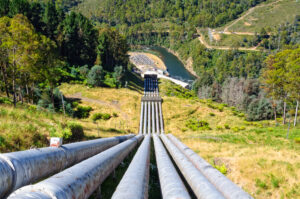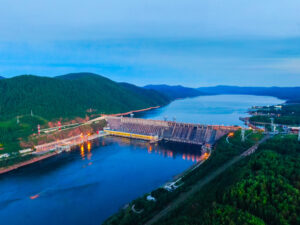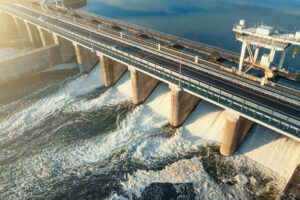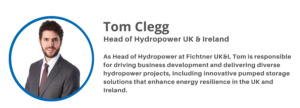Spotlight: Tom Clegg, Head of Hydropower UK & Ireland
For our next team spotlight session, we are delighted to introduce Tom Clegg, our Head of Hydropower at Fichtner UK&I.
Tom joined the team in 2018, he is a chartered engineer and certified functional safety engineer with over 13 years professional experience in the hydropower sector. Since joining Tom has led numerous impactful projects, bringing his extensive expertise in hydropower and project management to the forefront of our operations.
Find out more about Tom’s career, expertise, and inspirations below!
Q: What sparked your passion for engineering, and how did it lead you to explore the world of hydropower?
As long as I can remember, I have always been interested in cars, trains, ships and other things that move. It seemed like a natural fit to go into Engineering and I chose to study Mechanical Engineering at University.
During my second year, there was a module on Hydropower which gave my first taste of the technology. I followed this up with placement at a Hydropower consultancy as part of my fourth year. I spent nine months in Fort William working on run of river hydropower schemes in development and construction. Following graduation, I wanted to stay in Hydro and took a job at the hydro turbine manufacturers, Gilbert Gilkes and Gordon. This gave me the opportunity to work on a great variety of projects all around the world. I particularly enjoyed the chance to work on microgrid projects where the hydro turbine could power an isolated settlement. This took me to the Antarctic Island of South Georgia, Borneo, Mauritius, Kenya, the Caribbean, the USA and even the Highlands of Scotland! The difference once reliable power via a hydro turbine was available was so striking, particularly when it was replacing noisy diesel generation! It gave me a fantastic feeling of satisfaction knowing these remote settlements were using power from the hydro turbine I was responsible for.
Q: Can you share some details about your role as Head of Hydropower at Fichtner UK&I?
I am responsible for business development and delivery of hydropower work for Fichtner in the UK and Ireland. It’s a wide-ranging role, one moment I can be discussing an opportunity to support a client with an acquisition due diligence for a 100kW run of river scheme and the next, discussing turbines for a 2GW pumped storage hydro station. I appreciate the diversity and enjoy participating in the full lifecycle of Fichtner projects from initial introductions to the client, preparing a proposal, kicking off the work and working collaboratively with our clients, to finalising the deliverables and completing a package of work. I also get the opportunity to represent Fichtner and the hydropower industry from time to time at events. I’ve delivered presentations at the British Hydropower association annual conference, All Energy in Glasgow, and later this year will be speaking at the Hydro 2024 conference in Graz, Austria.
Q: How does your work on Hydropower and pumped storage projects play a vital role in shaping a sustainable energy future for the UK and Ireland?
Pumped storage plays a crucial role in balancing the network. Domestically, we have 4 stations with a combined installed capacity of 2.8GW. These stations act as large water batteries storing energy in their upper reservoirs by pumping when there is a surplus of generation on the national grid. When the energy is required, it can then be turbined back down and exported to the national grid. Pumped hydro stations are very efficient ways to store electricity with round trip efficiencies approaching 80%. They can respond very quickly to changes in demand and are extremely robust assets. The UK last built a pumped hydro in the 1980s, and the oldest station remains operational since construction in the 1960s. They remain a critical balancing tool on the national grid, particularly as we move to more intermittent sources of generation such as wind and solar.
Run of river also provides an important element of our generation mix. We have about 2GW of installed capacity which provides around 2% of the national demand annually. Importantly, hydropower generation peaks in the winter when demand is the highest. Storage hydropower, where water is stored behind a dam for generation when required, also allows generation to be dispatched at times when it is most needed. These characteristics are ideal for assisting in our transition to a net-zero power grid.
Q: Can you tell us about a particular career highlight or stand out moment from your experience that showcases the impact of pumped storage on energy resilience or sustainability?
The pumped storage projects we are currently supporting are all still in development stages, if Government timelines hold, then there is the chance we could have the first such station in operation by 2030. I will look forward to being onsite during the commissioning of these projects. Events such as the first rotation of units, first synchronisation and the load rejections are all milestones I recall well from my work commissioning Gilkes turbines, albeit at a very different scale. I am looking forward to seeing projects that have been in development for so long reaching this stage.
The impact of the new fleet of pumped hydro should be noticeable on the national grid energy mix. Currently, the first option dispatched to address a shortfall in electricity supply is gas-fired power stations. The new generation of pumped hydro will feature significantly larger storage capacities, and I will be looking to see the reduction in gas fired generation that this will yield.
Q: What advice would you give to engineers interested in pursing a career in renewable energy?
- Follow what interests you, if you have a passion for what you do, then work will never seem like work.
- I recommend spending part of your early career with an equipment manufacturer or contractor. First-hand experience is impossible to replicate and having a real appreciation for how projects come together, are constructed and commissioned is invaluable when you advance through your career.
- Take advantage of networking at university. I met my first two employers and maintain many industry contacts through connections made during my degree.
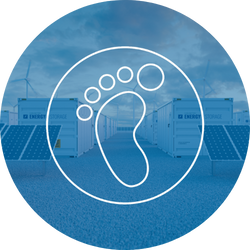


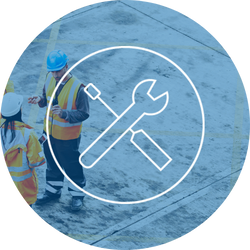

Tom will be delivering a paper on the Scottish based Loch Kemp Pumped Storage project at Hydro 2024 in Austria, the event will place between 18-20th November.
For more information – click here.
Tom will also be in attendance to chair the ‘Innovation in Hydropower session’ on day one of the BHA Annual Conference in Glasgow, held on 26- 27th November.
For more information or to register your attendance – click here.

